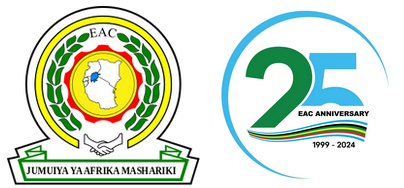Investment Framework: Key Features
EAC Partner States are in agreement about the need for cooperation in order to spearhead investment in the region. To this end, an EAC Model Investment Code was drafted in 2002, while development of an EAC Investment Policy and Strategy is ongoing.
The Investment Code is not a binding legal instrument but rather a model whose features the EAC Partner States may incorporate into their national laws.
Investment Promotion and Private Sector Development as contained in the third EAC Development Strategy (2006-2010) aims to:
- achieve free movement of people, capital, labour, services and right of establishment and residence;
- promote balanced and competitive industrial / manufacturing sector in the region;
- promote participation of the citizenry (civil society, women and private sector) and having them fully aware of the EAC affairs; and
- strengthen relations with other regional and international organisations.
Other key features of the investment framework include:
Duty Drawback Schemes
Drawback of import duties upon materials used exclusively in the production of goods exported to a third country is provided for in the Customs Union Protocol.
Duty and VAT Remission Schemes
The Customs Union Protocol provides for duty and VAT remission schemes to support export promotion.
Manufacturing-Under-Bond (MUB) Schemes
Within the Customs Union framework, the EAC Partner States may facilitate MUB schemes within their respective territories. Such schemes would allow imported goods to be used for processing or manufacturing.
Export Processing Zones (EPZs)
The Customs Union Protocol has spelt out Export Processing Zone Regulations, which are intended to ensure that the EAC Partner States establish EPZs in a uniform fashion and that the implementation process is transparent, accountable, fair and predictable.
To further promote uniformity, the EAC Partner States propose to develop an East African Community Model Export Processing Zones Operational Manual.
Burundi’s Export Processing Zones was established in 1993 as part of the overall effort to encourage Foreign Direct Investments, export diversification and promotion of nontraditional exports.
Kenya inaugurated her Export Processing Zones program in 1990 as part of the Export Development Program. The scheme is managed by a state agency, the Export Processing Zones Authority. www.epzakenya.com
Rwanda legislation provides for free economic zones of three kinds: export-processing zones, single enterprise export-processing zones and free trade zones. www.rwandainvest.com
Tanzania enacted the Export Processing Zones Act in April 2002, which gives the Export Processing Zones Authority the mandate to facilitate and oversee the implementation of the programme throughout the country.
Uganda has gazetted over 1000 hectares of prime industrial land to be developed into fully serviced industrial estates and export processing zones. The Uganda Investment Authority holds the government interest in the proposed project. www.ugandainvest.com
Free Ports
The Customs Union Protocol provides for the establishment of free ports within the Community. The functions of these ports include the promotion and facilitation of trade, the provision of facilities such as storage, warehouses and simplified customs procedures, and provisions for the establishment of international supply-chain centres, which would enhance the Community’s international competitiveness.
Harmonisation of Duty Exemption Regimes
The EAC Partner States have agreed to harmonise duty exemption schemes and adopt a single list of exemptions, which is to be specified in the customs law of the Community.
